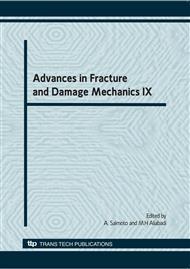p.789
p.793
p.797
p.801
p.805
p.809
p.813
p.817
p.821
Study on Fatigue Traffic Loading for Highway Bridges in China
Abstract:
This paper is focused on developing fatigue-load model for highway bridges based on the measurements data of WIM (Weigh-in-Motion) in China. In this paper, based on the analysis of vehicle flow data collected from six toll stations on Jing-Fu Highway which is one of the busiest highways in China, spring festival index and month index of vehicle flow are obtained. The finite element models are established, and the vehicle flows are modelled by using Monte Carlo method as dynamic load applied on the nodes of the models. This paper presents a fatigue truck model for Jing-Fu Highway bridges, which may also be used for other highway bridges in China. In order to validate the model, strain time histories were obtained through field strain measurements for 3 existing bridges on this highway. In addition, comparison among the model introduced in this paper and the models in foreign codes as well as the models developed by other researchers is presented.
Info:
Periodical:
Pages:
805-808
Citation:
Online since:
November 2010
Keywords:
Price:
Сopyright:
© 2011 Trans Tech Publications Ltd. All Rights Reserved
Share:
Citation:


